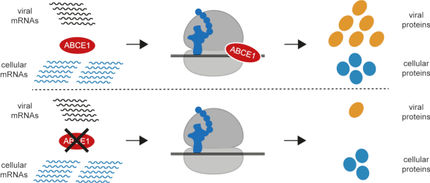UC Riverside Researchers Discover Model Organism For Studying Viruses that Affect Humans
Simple nematode has similar virus-fighting mechanism as humans and can be used in research
Advertisement
Researchers at the University of California, Riverside have discovered that a simple worm, called C. elegans, makes an excellent experimental host for studying some of the most virulent viruses that infect humans. The researchers published their findings in Nature. The paper reflects a major step forward in the study of how some of the world's most virulent viruses, such as West Nile, SARS, Ebola and hepatitis C interact with their hosts.
For years researchers throughout the world have studied C. elegans because many aspects of its biology, such as genetics, development and the workings of neurons, mirror the biology of humans. However, no viruses were known to infect the millimeter-long roundworm so it was not used as a model for studying viral infections.
The Nature paper now shows that UC Riverside researchers have developed a strain of the worm, C. elegans, in which an animal virus could replicate, allowing them to map the delicate dance of action and reaction between virus and host.
The UCR team has shown that virus replication in the worm triggers an antiviral response known as RNA silencing or RNA interference (RNAi). RNAi specifically breaks down the virus' RNA. Virus RNA creates proteins that allow the virus to function. The virus responds by producing a protein acting as a suppressor of RNAi to shut down the host's antiviral response. Virus infection did not occur when the viral RNAi suppressor was made inactive by genetic mutations in the host system.
C. elegans' RNAi system is considered a "blanket system," meaning that it has parallels in humans, making the worm model a valuable tool in studying the way viruses interact with hosts. This tool may speed the discovery of treatments for virus-caused diseases that plague humans.
Most read news
Topics
Organizations
Other news from the department science

Get the life science industry in your inbox
By submitting this form you agree that LUMITOS AG will send you the newsletter(s) selected above by email. Your data will not be passed on to third parties. Your data will be stored and processed in accordance with our data protection regulations. LUMITOS may contact you by email for the purpose of advertising or market and opinion surveys. You can revoke your consent at any time without giving reasons to LUMITOS AG, Ernst-Augustin-Str. 2, 12489 Berlin, Germany or by e-mail at revoke@lumitos.com with effect for the future. In addition, each email contains a link to unsubscribe from the corresponding newsletter.





















































